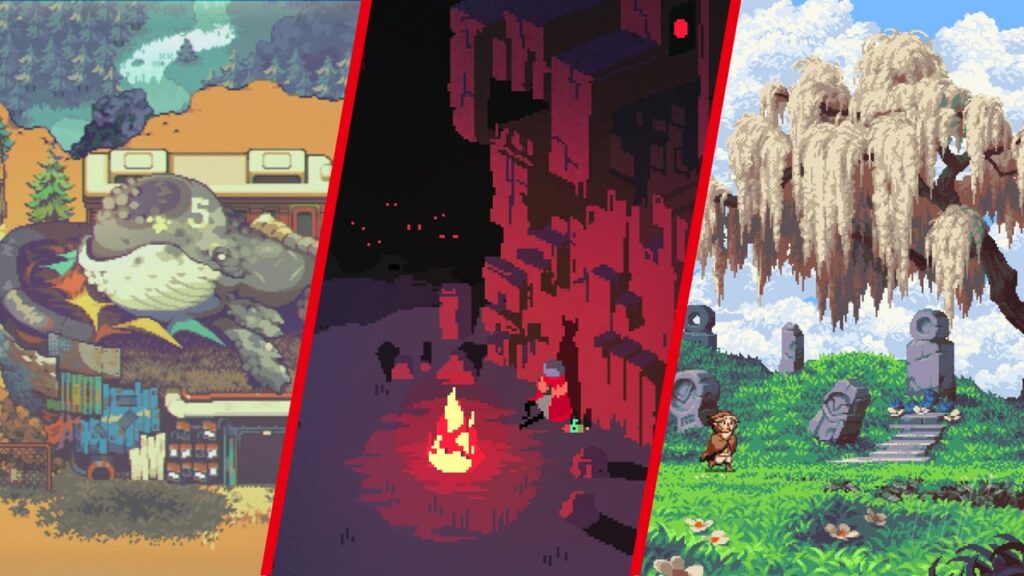The gaming industry is a complex and collaborative process involving a team of professionals in different stages to create engaging and memorable experiences. The article explains the different stages of game development, including concept and design, art and graphics, programming and development, sound design and music, and quality assurance and testing. The design team creates a detailed game design document, while artists and graphic designers create visual assets and user interface elements. Programmers use coding and scripting to create game systems and mechanics, and sound designers and composers produce the game’s sound effects and music. The final stage is quality assurance and testing, where the game is thoroughly tested to fix any bugs or glitches before release.
The Art of Gaming: An In-Depth Look at How Games Are Made
As a gamer, have you ever wondered about the behind-the-scenes process of how games are made? The gaming industry is a complex and intricate one, with a lot of moving parts. From concept art to programming, sound design to playtesting, game development is a collaborative effort that requires a talented team of professionals.
In this article, we will take an in-depth look at the different stages of game development, so you can better understand what goes into creating the games that we love to play.
Stage 1: Concept & Design
The first stage of game development is the concept and design phase. This is where a game idea is first born, and the basic concept is fleshed out.
Ideas may come from a variety of sources, including brainstorming sessions, market research, or simply a stroke of inspiration. Once an idea has been formalized, the design team gets to work on creating a game design document (GDD). This document outlines all of the game’s features, mechanics, and story points in detail, along with any supporting documents like sketches, diagrams, and notes on user experience.
The GDD is an incredibly important document that serves as a blueprint for the rest of the development process. Whether working on a full-scale AAA title or a smaller indie game, a thoughtful and detailed design document is critical to success.
Stage 2: Art & Graphics
The art and graphics phase is where the game world starts to take shape. This is where artists and designers create the game’s visual assets, including character designs, environments, and user interface elements.
Concept art is the starting point for any visual design work, and serves as a guide for the artists as they create the final game assets. In addition to creating 3D models and textures, artists may also work on animation, lighting, and special effects to bring the game world to life.
Meanwhile, graphic designers work on the game’s user interface, including menus, HUDs, and any other on-screen elements. This is an important part of the game development process, as the interface needs to be easy to navigate and use while also fitting in with the overall look and feel of the game.
Stage 3: Programming & Development
The programming and development phase is where the game’s mechanics and functionality come together. This is where coding and scripting are used to create the game’s user interactions, artificial intelligence, physics, and other game systems.
Programmers may work on creating the game engine, or use pre-existing engines like Unreal or Unity. They may also work on algorithms and optimization to make the game run smoothly on a variety of devices.
This phase of development is a balance between creative problem-solving and technical expertise. Programmers need to be able to work with artists, designers, and other team members to turn the GDD into a functional game that players will enjoy.
Stage 4: Sound Design & Music
Sound design and music are often overlooked in discussions of game development, but they play a critical role in creating an immersive gaming experience. Sound designers work on creating and implementing sound effects, while composers work on creating the game’s music and scoring.
Sound design involves more than just creating sound effects, however. Sound designers also need to consider the game’s audio mix, implementing spatial audio and adjusting levels to create the right atmosphere for each moment.
Music is also an important part of the game world, contributing to the game’s overall tone and setting. Composers may work on creating a main theme for the game, as well as individual pieces of music for different levels or areas.
Stage 5: Quality Assurance & Testing
The final stage of game development is quality assurance and testing. This is where the game is thoroughly tested to identify and fix any bugs or glitches, and to ensure that the game is balanced, fair and fun.
Playtesting is an important part of quality assurance, with developers inviting people to play the game at various stages of development to gather feedback. This feedback can then be used to make adjustments to the game before release.
Conclusion
The process of game development is a complex and collaborative one, involving artists, designers, programmers, and sound engineers. Each stage of development is critical, from concept and design to quality assurance and testing.
Whether playing AAA titles or indie games, it’s important to appreciate the amount of work that goes into creating engaging and memorable experiences. Next time you load up your favorite game, take a moment to think about the incredible effort and talent that went into bringing it to life.
